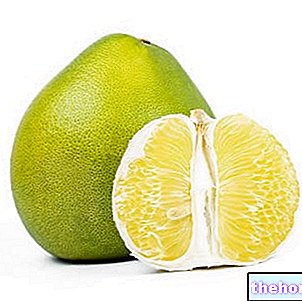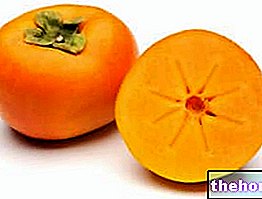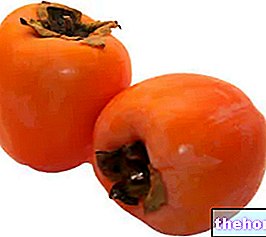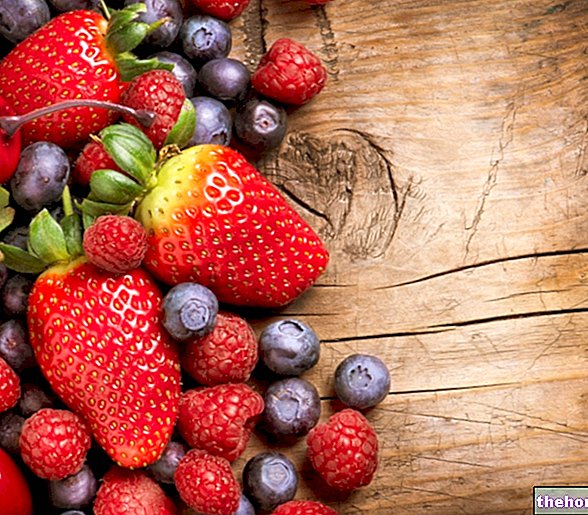
These are the oil seeds contained in the fruit (drupe) of the pistachio, a small tree up to ten meters high with high and dense foliage, belonging to the Anacardiaceae botanical family, Genus Pistacia and species true.
The small fruits, with an elongated and more or less flattened shape, can be eaten naturally, roasted and salted, or used as an ingredient in various culinary preparations - sauces, condiments, nougat, ice cream and various sweets. There is no lack of associations with meat, fish and cheeses of various kinds.
From a nutritional point of view, pistachios have a high calorie content and are not specifically classified in any of the VII fundamental food groups. This is because they are oil seeds, normally grouped in the so-called "dried fruit" set - walnuts, almonds, pine nuts, hazelnuts, cashews, macadamia, pecans, etc., not to be confused with dehydrated fruit. By virtue of the high lipid content, the energy intake is also very high - even higher than that of many sweets, cured meats and fatty sausages. However, this must not deceive the readers; despite being particularly caloric, pistachios - in the right portions - are suitable for most diets. Pistachios should be consumed in moderation only by those suffering from obesity and, if salted - the most common commercial form - by hypertensive people. Obviously, like all foods, excess is not recommended even in the presence of certain particular liver or kidney disorders. In the next paragraphs we will go into more detail.
The pistachio plant is native to Asia Minor but is now grown mainly in the Middle East, Tunisia, China and California. The pistachio tree prefers particularly hot and dry climates, which in our territory characterize the south. The Sicilian pistachio crops are quantitatively inferior, but qualitatively considered the non plus ultra - read also: "Pistachios of Bronte". Famous and appreciated all over the world, Sicilian pistachios are grown at an altitude between 300 and 800 meters.
or legumes, all starchy foods - because they mainly contain fats and not complex carbohydratesPistachios are very energetic foods. Calories are mainly provided by lipids, followed by proteins and finally carbohydrates. Fats are predominantly unsaturated - especially essential polyunsaturated omega 6 (linoleic acid), and monounsaturated omega 9 (oleic acid). The peptides have medium biological value - that is, they do not contain all the essential amino acids compared to the human protein model - and the carbohydrates are almost equally divided between solubles and complexes.
Pistachios contain no cholesterol and are very high in fiber. They are totally free of lactose and gluten; like the rest of nuts, they have a significant chance of causing allergic reactions. They are low in histamine but we must not forget that walnuts, hazelnuts, almonds and cashews are considered powerful histaminoliberators. They have a fair content of phenylalanine, while the purines are of medium entity.
Water-soluble vitamins such as thiamine (vit B1), niacin (vit PP) and pyridoxine (vit B6) abound, but also fat-soluble vitamins such as retinol or the equivalents (vit A or RAE), alpha tocopherol / tocotrienol (vit E ) and vitamin K (anti-haemorrhagic). Among the minerals, the concentrations of phosphorus, calcium, magnesium, potassium, iron (not very bioavailable), manganese, copper, zinc and selenium are to be considered.

On the other hand, they have no contraindications in the clinical nutrition of metabolic pathologies - in the absence of overweight; on the contrary, in the right quantities, they lend themselves to dietary therapy against metabolic pathologies. The essential polyunsaturated fat linoleic acid (omega 6) and monounsaturated oleic acid (omega 9) counteract hypercholesterolemia and, associated with other important nutritional factors such as dietary fiber, all antioxidants (polyphenols, vitamins, etc.), phytosterols and some minerals precious, they can favor the normalization of triglyceridemia, blood pressure and hinder the complications of type 2 diabetes mellitus.
However, it should be remembered that linoleic and oleic acid are unlikely to be deficient in the diet. On the contrary, omega 6 are statistically in excess compared to omega 3. Some studies have concluded that too many omega 6 can favor the increase of pro-inflammatory eicosanoids at the expense of the anti-inflammatory ones; it was then clarified that this "could" be attributable only to the excess of exogenous arachidonic acid, not linoleic acid - from which the body synthesizes enough of it. Therefore, there is no danger for those who regularly consume pistachios and oil seeds in general.
Dietary fibers, abundant in pistachios, perform numerous beneficial functions for the body. Associated with the right amount of water, which is lacking in oil seeds, fibers can:
- Increase the mechanical stimulus of satiety
- Modulate nutritional absorption - reducing the insulin glycemic surge and hindering the absorption-reabsorption of cholesterol and bile salts
- Prevent or treat constipation / constipation and promote the cleansing of the intestinal lumen by eliminating toxins.
This last aspect contributes to decreasing the chances of onset for:
- Large intestine carcinogenesis
- Inflammation of the hemorrhoidal plexus (hemorrhoids)
- Formation of anal fissures
- Anal prolapse
- Diverticulosis and / or diverticulitis etc.
Note: in the past it was believed that solid, non-chewable residues - typically formed by eating dried fruit or small seeds of sweet fruits - could trigger inflammation of intestinal diverticula. However, it seems that the main causes of diverticulitis are of another kind. , for example an impairment of the intestinal flora, a diet low in dietary fiber and constipation.
It should also be remembered that the fibers, especially soluble ones, constitute a growth substrate for the intestinal bacterial flora; maintaining the trophism of the microbiota, whose metabolism releases important factors for the mucosa, further favors the health of the colon.
Pistachios are an "excellent source of vitamins of the B group - B1, B2, PP, B5, B6, folates - very important coenzymes necessary for the metabolism of all body tissues. Being rich in folate, necessary for the production of genetic material, pistachios are ideal for the diet of pregnant women. Excellent supply of retinol equivalents (lutein and zeaxanthin), powerful antioxidants and precursors of vitamin A (retinol), involved in visual and reproductive function, etc. Equally good is the content of the antioxidant vitamin E (alpha tocopherol or tocotrienol) and of the antihemorrhagic vitamin K - on average rare in food.
The richness of phosphorus, calcium, magnesium, potassium, iron (not very bioavailable), manganese, copper, zinc and selenium helps to guarantee the coverage of specific needs. Potassium and magnesium, alkalizing minerals potentially lacking in those who sweat a lot - or in those who suffer from diarrhea - are directly involved in muscle contraction and any deficiency leads to muscle cramps and weakness. They also support therapy against primary arterial hypertension by promoting its reduction. Phosphorus is an abundant constituent of phospholipids - present in cell membranes, nerve sheaths, etc. - and - together with calcium - in bone hydroxyapatite; the body has a high need for it but nutritional deficiency is unlikely. Zinc is an antioxidant mineral and essential to the constitution of many proteins, including hormones and enzymes; selenium, on the other hand, constitutes various endogenous antioxidant enzymes and is essential for health of the thyroid gland. Manganese is also a necessary element for the functioning of various enzymes. We leave out the functions of iron, of which pistachios are certainly not a primary nutritional source - also due to the scarce availability of the latter. The organism is rarely deficient in copper - necessary for the constitution of various proteins such as, for example, albumin.
Pistachios are to be avoided, logically, in case of food allergy; instead there are no contraindications in the most common forms of food intolerance, such as celiac disease and lactose intolerance. They could be histaminoliberators, so it's best to avoid them in case of severe histamine intolerance.
It is not a recommended food in case of phenylketonuria and even if suffering from hyperuricemia, especially severe with gouty attacks.
Pistachios have no limitations in the vegetarian, vegan and raw food diet; the same is true for philosophies and / or religions of all kinds.
The average portion of pistachios is 10 g (about 50-60 kcal).
and light green pulp, with a characteristic flavor. As the fruit ripens, the shell changes from green to reddish yellow and tends to open. This phenomenon, also used as a botanical selection criterion - for the greater ease of shelling - is known as dehiscence and occurs by making a characteristic noise - "pop".



























